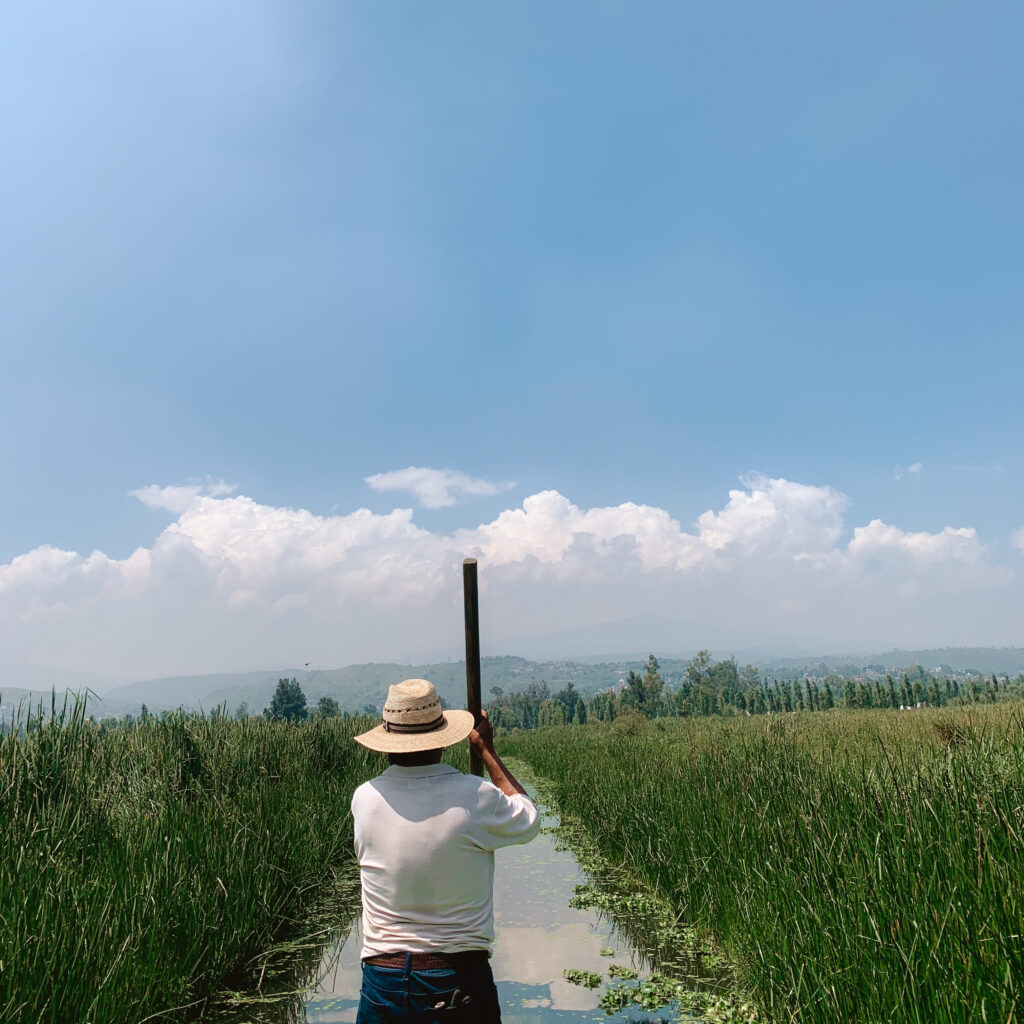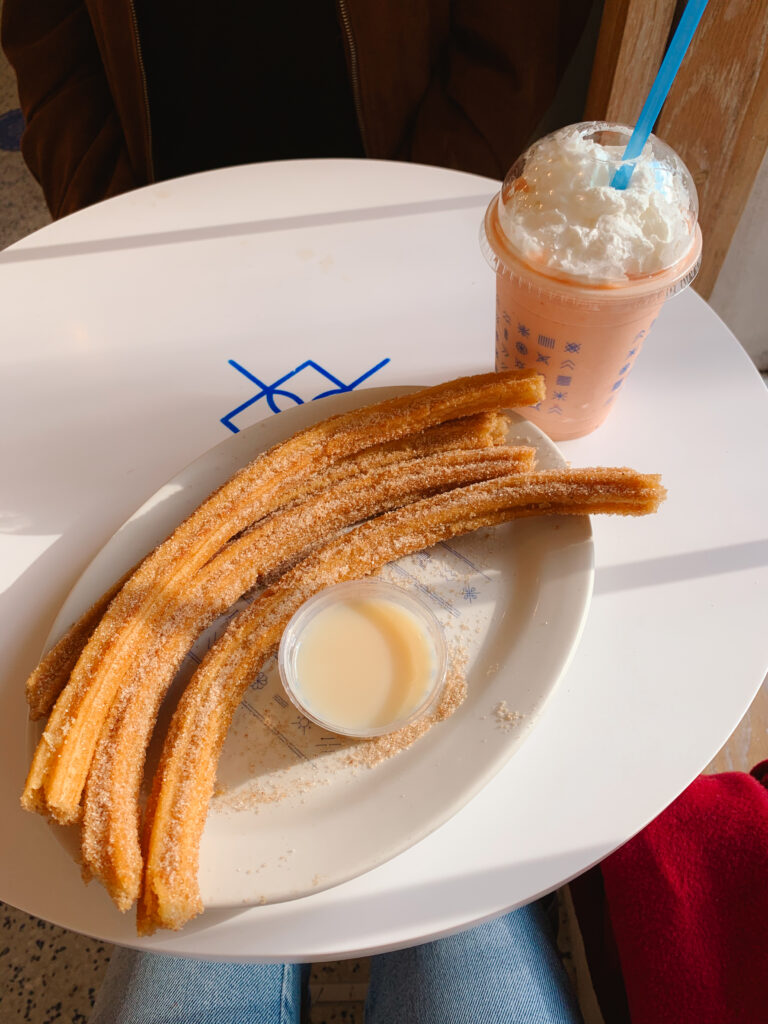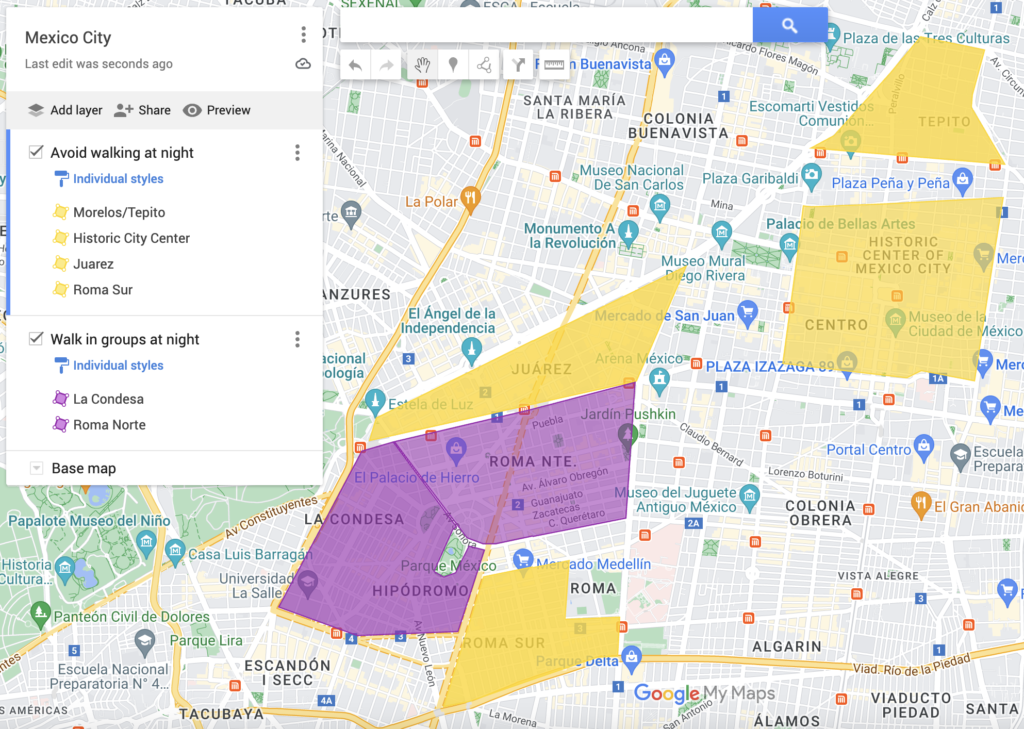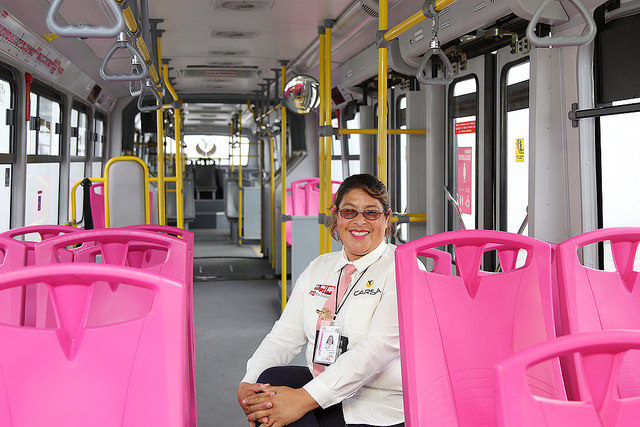
Women should know that Mexico’s capital city does have high crime rates due to local gangs and petty theft. But if you know how to navigate it correctly, Mexico City is absolutely safe for solo female travelers! After living in Mexico City for two months, I was able to get a good feel for the city’s safety landscape. Following these six steps gives me peace of mind while traveling in Mexico City.
Security Overview
Is there a lot of cartel activity in Mexico City?
The most impactful threat cartels pose to tourists in Mexico City are shootouts. Cartel leadership own houses in wealthy suburbs of the city. As such, shootouts do happen on occasion, mostly between security forces and cartel members. Tourists are at risk of being wounded by a stray bullet should they be in the vicinity.
Cartels tend to keep a lower profile in Mexico City for two reasons. First, there are more security personnel in the city which deters cartel influence. Second, cartels don’t want to attract unnecessary attention to their operations. They mainly use the capital city to sell drugs to locals and traffic illegal goods through the airport. Neither of these activities pose a direct threat to tourists.
What does the U.S. State Department say?
The U.S. State Department has labeled Mexico City as Level Two “Exercise Increased Caution.” It is in good company: the United Kingdom and Germany have the same rating. The State Department warns that travelers should, “exercise additional caution, particularly at night, outside of the frequented tourist areas.” I could not agree more. Travelers going off the beaten path in Mexico City should bring a good dose of common sense with them.
6 Things Women Should Know Visiting Mexico City
1. Which neighborhoods of Mexico City are the safest?
Condesa
Condesa is my favorite neighborhood as a solo female traveler. It has fantastic crime statistics and the streets are lined with plants. Expect laid-back bars & restaurants.

Roma Norte
Solo female travelers won’t have a problem as crime statistics are good for Roma Norte. It is full of art, nightlife and restaurants that make it attractive for tourists. Watch for pickpockets! To stump thieves, put your valuables in a rip-proof crossbody bag.
Polanco
Polanco is one of the safest places in Mexico City. It is also quite residential, away from restaurants and nightlife. If you want to be close to the goings on, stay elsewhere.
Coyoacan
Coyoacan is another very safe neighborhood with good crime statistics. It is artsy, yet holds that traditional Mexican charm. But it is not as centrally-located, meaning you will need to take public transportation to many of the attractions.
Juarez
Do not stay here. Many recommend this neighborhood, but there has been a spate of home robberies as recently as August 2023. If you’re considering a homestay or AirBnB, avoid staying in Juarez. During daylight hours, it should be fine, but don’t get caught in Colonia Juarez at night!
2. Which areas of Mexico City should I avoid?
Avoid northeastern Mexico City
Do not venture into northeastern parts of the city alone, unless visiting a specific site. Cartels use these neighborhoods, often targeting wealthy-looking foreigners for robberies.
Avoid these neighborhoods on the outskirts of Mexico City —
- Ejercito de Oriente
- Santa Catarina Yechuitzol
- Héroes de Padierna
- San Bartolo Ameyalco
- Alce Blanco
- Prensa Nacional
- Cuautepec Barrio alto and bajo
Avoid some areas at night
In yellow are the touristy parts of Mexico City I would personally avoid at night. Purple shows the areas of the city I feel comfortable strolling around after dark with a group of people. Even in the safer areas of t he city, I personally avoid walking in parks at night as many robberies take place under to cover of the greenery.

3. How should solo female travelers get around Mexico City?
Uber
Uber is a safe and economical way to move around. It is also a great way to get from the airport to the city. Using Uber ensures you don’t get driven around to drive up the meter, a common tactic with taxis.
Metrobús
Metrobús is a safe way to use public transportation in Mexico City. Female-only sections in each bus are designated by bright pink seats, offering female travelers an escape from potential harassment. Remember to keep any purses, backpacks or bags in front of you!

Other public transit
City buses and the subway system are not safe. The train system in Mexico City has older infrastructure that periodically collapses. A collapse killed 26 people in 2021. Theft is common on the metro and other buses aside from the Metrobús, best to avoid.
Taxi
Taxi’s off the street can be dangerous. Episodes of women being drugged and/or robbed after getting into illegal taxis happen occasionally. Instead, download the ‘Mi Taxi’ app to ensure a safe ride.
Bike
Bikes are a great way to get around the city. On Sundays, only bikes are allowed on main streets from the Historic Center to the southernmost parts of the city from 7:00am till 2:00pm, the perfect way to see the city.
Walking
Walking is the best way to get to know the city intimately. But be careful! Cars act as if they have right-of-way, so don’t expect them to stop for you!
4. What are the most dangerous scams?
Virtual kidnapping
Strangers ask you to fill out a form or petition with your phone number and later you get a call claiming that a family member or friend has been kidnapped, asking for a ransom. Do not give your phone number to people you don’t know. If this happens, immediately call the police and freeze your bank account.
Express kidnapping
Under this scheme, fake taxi drivers drug or threaten you before driving you to ATMs to take out money. This scam does not usually target foreigners, but if you have decent Spanish you may be targeted. Do not hail taxis off the street or accept rides from taxis you did not arrange in advance.
Fake emergency phone call
Ignore people who ask to use your phone, have an ‘emergency,’ or even just want to know the time. They will often steal your phone right out of your hands.
Credit-card skimming
Fake ATMs will steal your credit card information, avoid using ATMs that are not affiliated with a bank branch. While in restaurants & bars, ask the waiter to bring the payment machine to your table, never let your card leave your sight.
5. What women should know before visiting
How frequent is catcalling in Mexico City?
Catcalling happens periodically in Mexico City, but men rarely approach you on the street in my experience. If they do, ignoring them is the best course of action. If they are persistent, go into a store and immediately alert the staff. Mexico City is relatively progressive and someone is likely to help you get away from the creeper.
What to wear when visiting Mexico City?
Chilonga (Mexico City locals) style favors darker colors and modest clothing. If you wear anything colorful or revealing, expect to receive some looks. It is mostly curious stares, but sometimes it can be uncomfortable. If you want to fit in, stick with black.
Is it safe to walk around at night in Mexico City?
For women, it is best to avoid walking alone at night. Some areas (the ones listed above) are fine to walk in a group. But opting to take a taxi is the best course of action.
Are police in Mexico City corrupt?
Don’t approach local police. Police forces in the capital city are often corrupt and target foreign tourists to pay bribes in return for expedited services or any services at all. Many will make up “fines” that you need to pay. If this happens, pay the “fine” but contact your bank for reimbursement.
What should I do in the event of an earthquake?
Mexico City lies on a fault line, meaning earthquakes happen often. Locals suggest to evacuate buildings in the event of an earthquake. Get as far into the street as possible. Poor infrastructure means that buildings often collapse entirely during earthquakes.
Do tourists need to buy a SIM card in Mexico City?
A SIM card is important. You won’t be able to contact anyone or use Google Maps without a Mexican SIM. I opted for a Telcel prepaid SIM, which you can get at an OXXO convenience store or even at the airport.
6. Know emergency numbers
Saving embassy and consulate numbers in my phone before traveling brings me immense peace of mind. I also write them down and store them in my hotel room. This way, should something bad happen, I am not panicking but instead have a direct line to my country’s services and already know the emergency line.
- For any emergency, dial 911.
- For non-emergency assistance, dial +52 55 5658 1111.
- For Mexico City’s Tourist Assistance Hotline, dial + 52 55 5286 7097 extension 2104 or +52 55 5286 9077 extension 2309.
- For the U.S. Embassy, dial +52 55 5080 2000 and for emergency embassy services dial +52 55 8526 2561.
- For the British Embassy, dial +52 55 1670 3200.
- For the Australian Embassy, dial +52 55 1101 2200.
Conclusion
Female travelers should be wary of pickpockets, be on the lookout for common scams, and avoid neighborhoods on the outskirts of the downtown area. But, overall, Mexico City is one of my favorite places to travel alone. Aside from the rare violent incident, tourists rarely feel the presence of cartels. Solo female travelers with a good head on their shoulders should not let security concerns dissuade them from living it up in Mexico City!
Traveling elsewhere in Mexico? Check out the other Mexico guides, including female travel safety for Cancun.